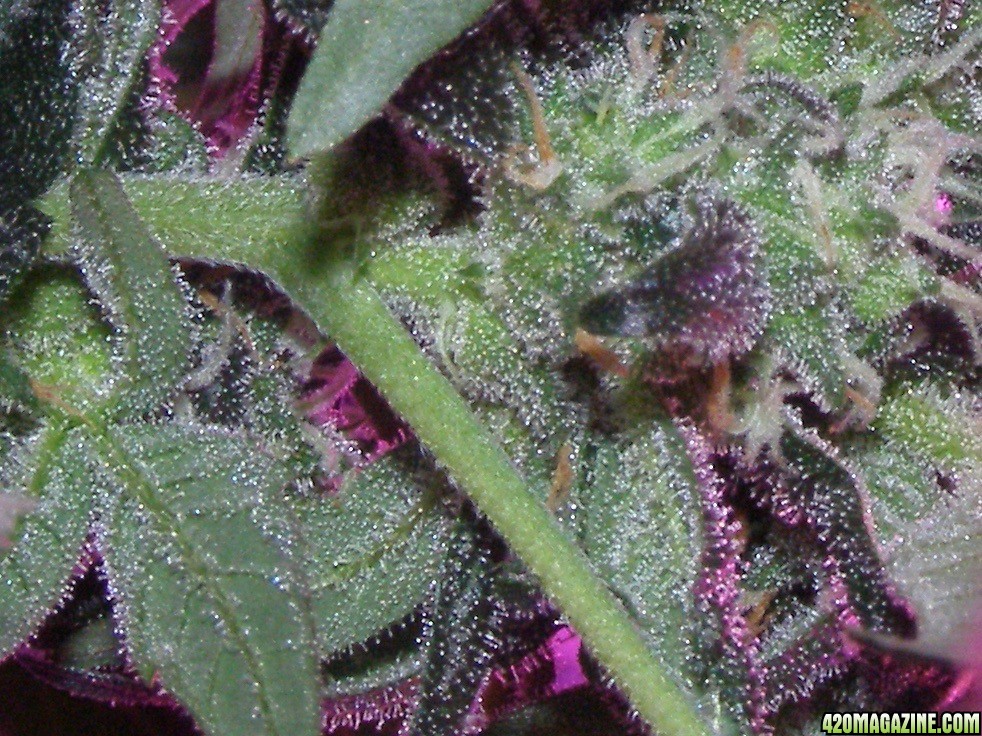- Thread starter
- #41
* crude sugar- the osmotic pressure gets better the cruder the sugar is, so white will work, but not as well as muscovado sugar. You can use molasses iso sugar, but because it's a liquid, not crystalline, again, osmotic pressure (she says as though she has the slightest clue as to what osmotic pressure is.������. No effing idea, but it does something important).
That's great, because an article I've been studying lately talks about osmosis as the diffusion of water in soil which, combined with capillary action, enables nutrients to get into the plant roots. Nutrients exist in soil water as dissolved solids, or solute, and osmosis describes a process whereby soil water moves "from areas of low solute concentration to areas of high solute concentration", thereby enabling the even distribution or diffusion, of nutrients throughout soil. (so i while I was assimilating this info I realised why they call it Osmocote
 )
)Going back a step - in order for nutrients to be absorbed by roots they have to make contact and this contact comes about in 3 different ways: 1. root interception (as far as I can understand it this describes the roots seeking out and finding nutrients via exploring the soil i.e., growing), 2. mass flow (the movement of water past the root surface) and 3. diffusion (different to what i described as diffusion above, but the same principal/process - here it's the diffusion "of a particular nutrient along a particular concentration gradient"). For all of these it makes sense to think that efficiency is going to be better when there is even distribution of nutrients and osmosis, as described above, is what enables that distribution. Without being able to explain any further about that (i'll link the article below), I can see that this osmotic pressure you mention has a lot to do with this! A quick wiki search on osmotic pressure talks about it being something which controls (manages? regulates? makes possible - i'm not sure the best word here) the passing of water through a membrane - often a cell membrane is what's given as example. So I don't know if more or less osmotic pressure is better for this passage - but which ever it is this crude sugar you speak of is therefore being described as some kind of enabler of dissolved particles getting through. My guess is that it might be lowering the osmotic pressure because in reverse osmosis water purification it is high osmotic pressure that allows water to pass through the filter membrane but not the particles. (Be great if someone could confirm or deny this guess and its bases).
I'm no scientist and I'm hoping someone who knows bit here will step in and clarify. I don't want to become a soil scientist either, but I want to understand enough so that when someone trying to sell me a product says it does a certain thing (like improves osmotic pressure, or improves cation exchange capacity, for example) I kind of have a need to understand, at some level, what that means.
It's exciting too - because i'm looking at the ground totally differently now
 And now you might (MA) have some effing idea
And now you might (MA) have some effing idea 
The article I'm referencing is this one (originally this link was provided by Conradino23 - in another journal)
Soil Management
I'm wondering also - is there another way to optimise this 'pressure' rather than using sugar...

I know there are 1 or 2 PMs awaiting my attention. My responses are formulating, just a bit busy preparing to go away. I'll get there soon enough ...





 on the wealth of information already in here, good work and thanks for bringing it all to us Amy!
on the wealth of information already in here, good work and thanks for bringing it all to us Amy!

 and thanks for coming over. You're on the list of invites I never finished sending out as well. Glad to have you here - it's going to be a fun summer
and thanks for coming over. You're on the list of invites I never finished sending out as well. Glad to have you here - it's going to be a fun summer 


